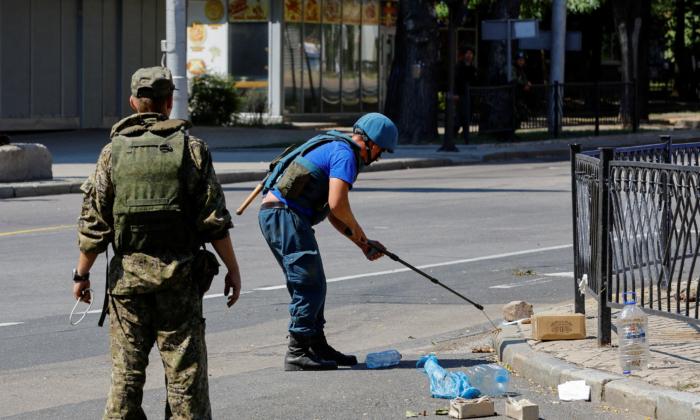The first of 10,000 Mexican National Guard troops began deploying along the border between the cities of Ciudad Juárez, Mexico, and El Paso, Texas, on Feb. 5.
The move by President Claudia Sheinbaum is in response to President Donald Trump’s pledge to impose 25 percent tariffs.
On Feb. 3, Sheinbaum announced she would deploy about 10,000 National Guard troops to the border with the United States in an effort to stem the smuggling of narcotics, including fentanyl.
The White House said fentanyl kills 75,000 people a year in the United States, more each year than the number of Americans killed in more than a decade of fighting in Vietnam.
The Mexican government says its biggest deployment will be 1,949 National Guard troops at Tijuana, with another 1,650 sent to Juárez.
Additional units were scheduled to be redeployed from Cancún and Campeche, while other troops were expected to travel north by road.
‘Permanent Surveillance’ on Border
José Luis Santos Iza, one of the Mexican National Guard commanders in Ciudad Juárez, told a media briefing on Feb. 5: “There will be permanent surveillance on the border. This operation is primarily to prevent drug trafficking from Mexico to the United States, mainly fentanyl.”Masked and armed Mexican National Guard soldiers picked through the brush on the outskirts of Ciudad Juárez, pulling out makeshift ladders and ropes tucked away in the trenches.
Patrols were also seen on the border north of Tijuana.
The deployment represents a massive change in Sheinbaum’s attitude only days after she rejected claims of collusion between her government and the fentanyl smuggling cartels.
Sheinbaum Rejects Claim
On Feb. 2, Sheinbaum responded in a post on social media platform X, saying, “We categorically reject the White House’s slander against the Mexican government of having alliances with criminal organizations, as well as any intention of intervention in our territory.”However, on Feb. 3, Sheinbaum and Trump reached a deal, and the White House agreed to postpone the 25 percent tariffs for a month.
In response, Sheinbaum promised to send in the Mexican National Guard to try to prevent the smuggling of fentanyl by gangs such as the Sinaloa cartel, the Jalisco New Generation cartel, and the Northeast cartel.
The cartels often build tunnels that cross the border to smuggle drugs.
Sheinbaum, Mexico’s first woman leader, replaced President Andres Manuel López Obrador last year after winning the presidential election.

During Secretary of State Marco Rubio’s trip through Latin America—where illegal immigration was at the top of his agenda—he thanked the Mexican government for its swift action.
“So one of the ways that you see these trans-shipment points as they work their way towards the United States, unfortunately, part of it is through Guatemala. And the way to cut back on that is to have vetted units who work very closely with, who have the capacity through the K-9 units to identify fentanyl shipments that are often obviously hiding among other cargo or baggage.”







